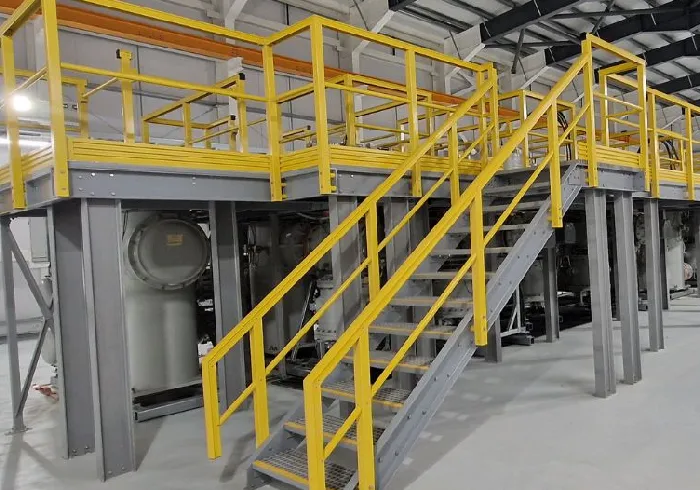loading...
- No. 9, Xingyuan South Street, Dongwaihuan Road, Zaoqiang County, Hengshui, Hebei, China
- admin@zjcomposites.com
- +86 15097380338
- Welcome to visit our website!
fiberglass rebar price
Understanding Fiberglass Rebar Prices A Comprehensive Overview
Fiberglass rebar, a popular alternative to traditional steel reinforcement, has gained significant traction in various construction applications over recent years. This innovative material is composed of continuous glass fibers, combined with a resin matrix, creating a lightweight yet durable reinforcement solution. As the construction industry emphasizes sustainable practices and cost-effectiveness, understanding fiberglass rebar pricing is essential for contractors, engineers, and project managers alike.
What Factors Influence Fiberglass Rebar Prices?
1. Material Composition The primary determinants of fiberglass rebar prices stem from the type of glass fibers used and the quality of the resin matrix. Higher-quality materials typically lead to superior performance and durability, which in turn influences pricing. Manufacturers often offer different grades of fiberglass rebar, affecting the overall price point.
2. Diameter and Length Fiberglass rebar comes in various diameters and lengths to accommodate different structural requirements. Larger diameters or longer lengths will generally increase costs. Conversely, smaller, standard sizes may provide more economical options for projects with limited budgets.
3. Production Techniques The manufacturing process can significantly affect pricing. Advanced techniques that improve the uniformity and strength of the rebar may incur higher production costs, which manufacturers then pass on to consumers.
4. Quantity As with many materials, buying in bulk can lead to reduced prices per unit. Contractors often negotiate pricing based on project size and expected demand. Larger contractors might have the leverage to secure better deals compared to small-scale buyers.
5. Market Demand Fluctuations in demand for construction materials can impact fiberglass rebar pricing. Increased use of this material in projects like bridges, highways, and tunnels, especially in harsh environmental conditions, can drive prices up. On the other hand, during economic downturns, there may be a decrease in pricing due to lower demand.
6. Regional Availability Pricing can also vary by region based on the availability of materials and local production capacities. In areas where fiberglass rebar is not commonly used or produced, transportation costs can add to the overall price.
7. Supplier Relationships Establishing a good relationship with suppliers often leads to more favorable pricing terms. Repeat buyers and loyal customers may receive discounts or additional services, which can significantly reduce the overall cost of acquiring fiberglass rebar.
fiberglass rebar price

Current Pricing Trends
Currently, the price of fiberglass rebar generally ranges from $1.00 to $2.00 per pound, depending on the several factors mentioned above. Compared to traditional steel rebar, which can range from $0.50 to $0.80 per pound, fiberglass offers advantages in terms of long-term savings, particularly in corrosive environments where maintenance costs of steel can escalate.
Benefits of Investing in Fiberglass Rebar
1. Corrosion Resistance One of the most notable benefits of fiberglass rebar is its resistance to corrosion. This property makes it ideal for projects in coastal areas or where de-icing salts are prevalent, minimizing the need for future repairs.
2. Lightweight Nature Fiberglass rebar is significantly lighter than steel, reducing transportation costs and making handling on-site easier. This characteristic allows for faster installation, potentially speeding up project timelines.
3. Electrical Insulation Unlike steel, fiberglass does not conduct electricity, making it a safer option for certain applications, particularly in infrastructure projects near electrical installations.
4. Longevity The durability of fiberglass rebar often leads to longer-lasting structures, which can result in lower life-cycle costs as the need for replacement and repairs diminishes.
Conclusion
As the construction industry continues to evolve, fiberglass rebar stands out as a worthy investment, particularly when assessing long-term costs versus initial expenditure. While the prices may vary due to several influencing factors, the advantages it offers in terms of durability, installation ease, and maintenance can lead to significant savings over time. Understanding the nuances of fiberglass rebar pricing will empower stakeholders in making informed decisions that align with both budgetary constraints and project requirements.
-
The Rise of FRP Profiles: Strong, Lightweight, and Built to LastNewsJul.14,2025
-
SMC Panel Tanks: A Modern Water Storage Solution for All EnvironmentsNewsJul.14,2025
-
GRP Grating: A Modern Solution for Safe and Durable Access SystemsNewsJul.14,2025
-
Galvanized Steel Water Tanks: Durable, Reliable, and Ready for UseNewsJul.14,2025
-
FRP Mini Mesh Grating: The Safer, Smarter Flooring SolutionNewsJul.14,2025
-
Exploring FRP Vessels: Durable Solutions for Modern Fluid HandlingNewsJul.14,2025
-
GRP Structures: The Future of Lightweight, High-Performance EngineeringNewsJun.20,2025
